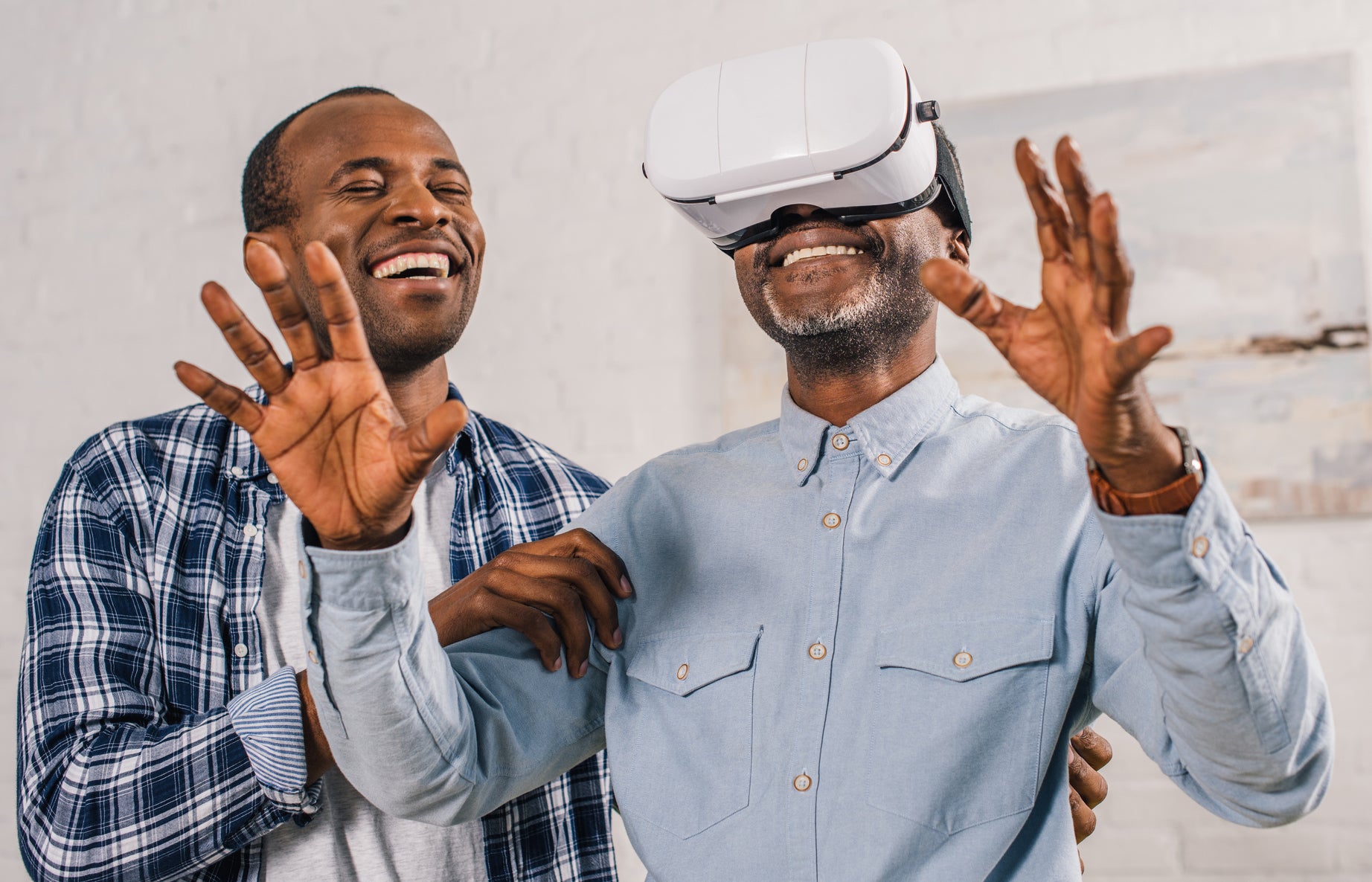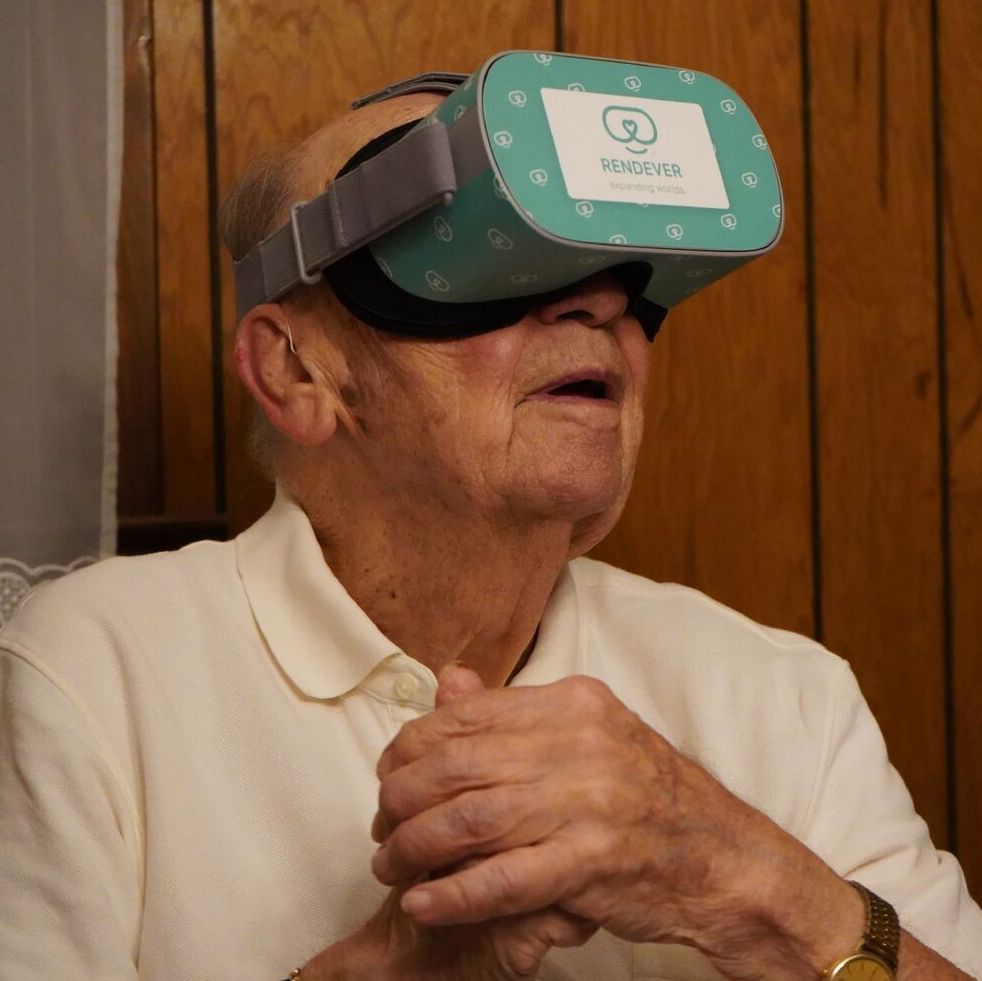
A Virtual Connection


Once a device limited to science fiction, virtual reality (VR) has made its way into everyday life. The film and gaming industries leverage VR to create more engaging entertainment while medical schools use the technology to train the next generation of doctors. And fitness centers frequently employ VR sound and visuals to put an immersive twist on traditional exercise classes.
Now, a group of researchers and entrepreneurs, including UC Santa Barbara communication professor Tamara Afifi and social psychology professor Nancy Collins, are bringing VR to assisted living facilities, harnessing its power in a profound way.
With a grant from the National Institutes of Health, Afifi, an expert in interpersonal health communication, is partnering with the virtual reality company Rendever to test a new development in VR technology — long-distance synchronization — and how it might help residents, particularly those experiencing cognitive decline, stay in better touch with their families.
“We want to help older adults who are in residential care communities connect with their family members who don’t live near them,” said Afifi. It can greatly benefit the residents, she noted, and ease some of the associated guilt and anxiety that plague their adult children, especially when parent and child live far from each other.
Imagine parents and children swimming with dolphins together or riding in a hot air balloon or strolling the Champs Elysees — all from the comfort of their respective living rooms.
For this pilot study, Afifi’s team is working with residents of Maravilla in Goleta and The Foothills in Simi Valley. Headsets will be provided to the adult children of 44 residents, each of whom has some form of memory decline — for half of them it’s mild cognitive impairment, for the other half, it’s mild to moderate dementia.
Because the headsets are synced, parents and children can also speak to each other through the devices, regardless of where they live.
The study has four parts. First, Afifi’s team will listen in on a regular phone call between parent and child, followed by an interview and a survey. This will provide the researchers with a baseline of how the participants usually interact. VR sessions will follow, one over each of the next three weeks.
In the first session, parent and child will travel together to a location they commonly enjoyed visiting. Through the headset, they will share the experience and, despite hundreds of miles between them, be able to speak to each other in real time.

Charles Jung, 90, immerses himself in a virtual experience.
Photo Credit: RENDEVER
The second session will take them to a location that is meaningful to the parent — a childhood home, via Google street view, perhaps. The researchers will guide the pair on their walk down memory lane.
During the final session, the participant pairs will view family photos and videos in a cozy virtual family room. And each individual will have the other person’s avatar next to them on the virtual couch watching the videos and photos together, Afifi explained.
She believes the experience will serve as reminiscence therapy for those with cognitive impairments while also bridging the distance between parents and their adult children, both literally and figuratively.
Afifi studies how family members communicate when they are stressed and how this impacts their health and ability to thrive. Through the project with Rendever, she will be testing her theory of resilience and relational load, which contends that viewing relationships as “unified” against life’s challenges and maintaining them helps buffer against stress, improves mental health and ensures that the relationships thrive.
Affifi believes that leveraging VR technology as a tool to maintain an active relationship would keep residents engaged with their families and give them something enjoyable to do. And that, in turn, should enhance their relationships, improve their vitality and help them thrive and age successfully, she explained.
Eventually, Afifi plans to follow up this pilot study with a larger clinical trial, evaluating the effects of these VR sessions against more typical treatments and activities. For now, though, she and the company want to test the feasibility of VR’s long-distance capabilities and its use with residents that have varying levels of cognitive impairment.
But feasibility is not the only question in her mind for this study. The team also wants to know whether the experience is worthwhile. “Does it help bring the adult child and parent closer together? Does it increase vitality? Does it decrease loneliness?” Afifi said.
The prospects offered by VR touch Afifi on a more personal level as well. She herself was a caregiver for her mother-in-law who lived with Alzheimer’s disease.
She and her husband left their positions at UC Santa Barbara for jobs at the University of Iowa, where they would be closer to her mother-in-law and could help care for her. But after three years, the two of them could no longer meet her needs, and had to move her into a memory care community. They returned to UCSB, and Afifi’s mother-in-law passed away a few months later.
Afifi recalled her feelings about moving away. “It brings with it a lot of guilt,” she said. “We really wanted to remain with her, and yet, we missed our jobs here, too.”
Afifi also remembered how her mother-in-law began to lose the ability to do many of the things she used to enjoy. “If we had this VR technology back then, we could have engaged in this experience together, and she would have really enjoyed it,” she said. The synchronized version she’s now testing with Rendever would have made this possible even from her home in Santa Barbara.
“We should really find ways to help older adults thrive,” Afifi said. “Even if they have memory challenges or physical challenges, shouldn’t be a barrier, especially with all the technology we have at our fingertips.”



